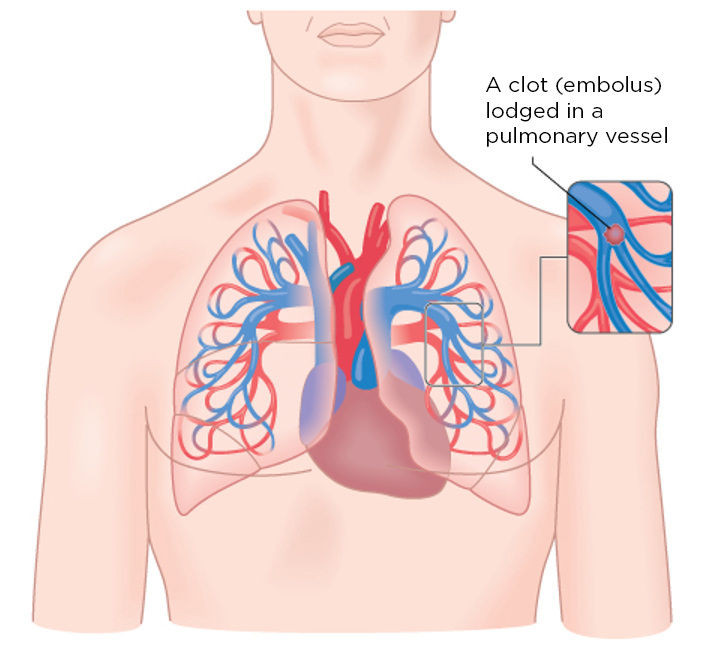Pulmonary is a term used when referring to something affecting, occurring in, or related to the lungs. When a blood clot (thrombus) detaches from the wall of the vein in which it has formed, it is carried in the blood and can become lodged in the blood vessels of the lung; this is known as pulmonary embolism (PE). [1]

The size of the blood clot has an impact. Large thrombi can lodge in the main pulmonary artery and cause severe symptoms [2]. Smaller clots can block smaller arteries on the edge of the lung; often there are a number of small clots present. Large clots may be life threatening and require immediate treatment [2].
It may be hard to diagnose PE, because the symptoms are like those of many other problems. Common symptoms of a PE include breathlessness, chest pain and coughing up pink mucus [2]. Doctors assess patients and decide if a diagnosis of PE is likely before further tests are conducted. If the score suggests a PE is likely, scans of the lungs are performed to look for clots [2].
PE can be effectively treated with medication, but can be life-threatening if left untreated. It is important that treatment is started as soon as possible if a PE is suspected, and so having a diagnosis quickly is essential [2].
Always talk to your doctor if you have any concerns or if you think you have symptoms of PE.
VTEMatters offers general information only. Please see a healthcare professional for medical advice.